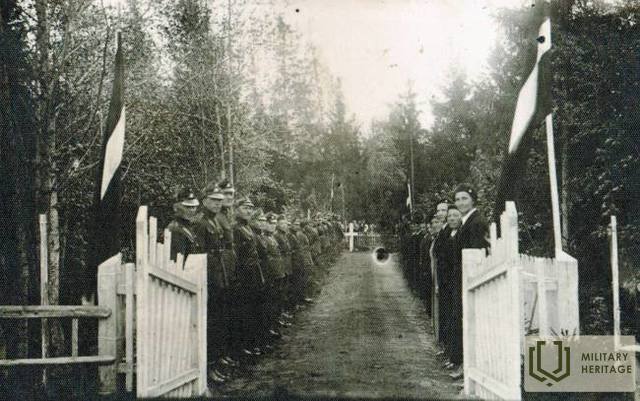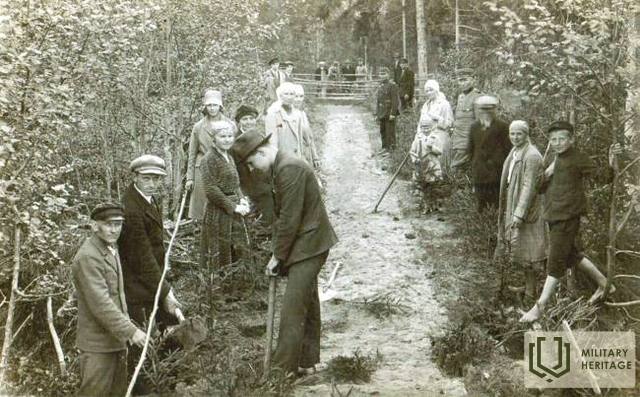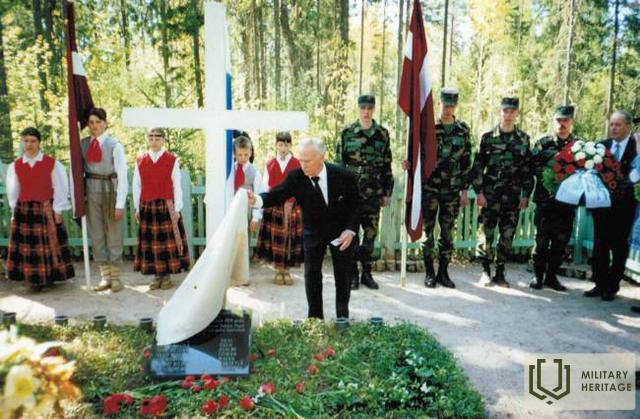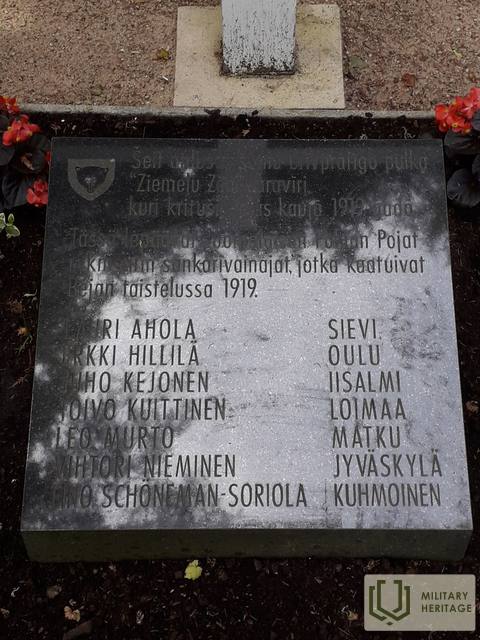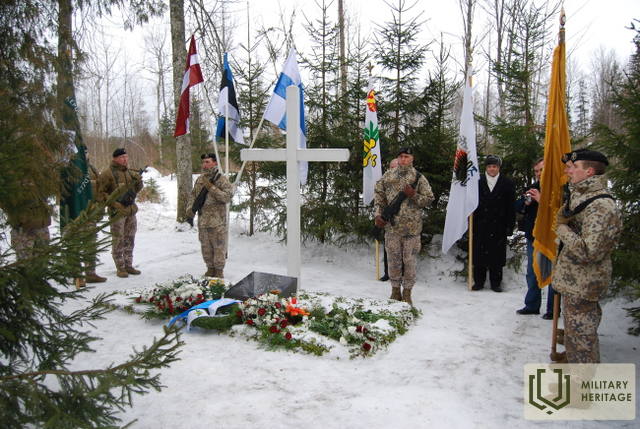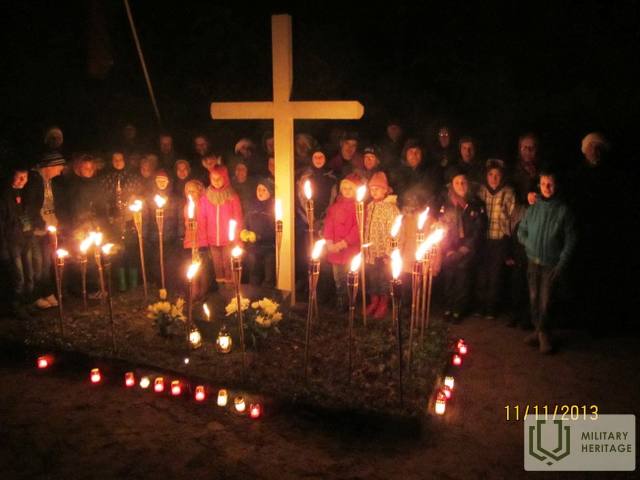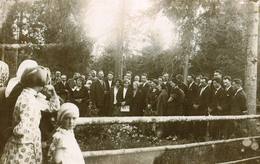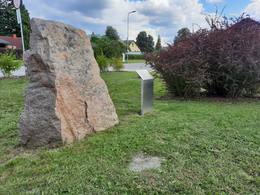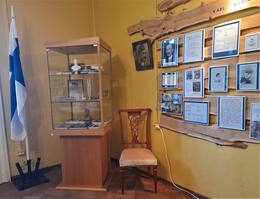Battle of the Finnish Volunteer Regiment "Northern Boys" in Beja
On February 23, 1919, a reconnaissance unit of the Finnish volunteer regiment "Boys of the North", hoping to obtain additional weapons and ammunition, arrived at the Beja School ravine, where a clash with the Bolsheviks took place (Battle of Babecka). 10 soldiers of the Finnish regiment fell in this battle.
“During the War of Liberation, my mother’s brother Eino Soriola studied at the Kurkijo Agricultural School. One day, the Reds came to the school and announced that they were going to kill the capitalists’ puppies. 22 guys were taken out into the yard and shot, but my mother’s brother and another guy managed to stay alive. They lay wounded under a pile of comrades’ bodies. The other guy, who was wounded in the stomach, was later found and stabbed with bayonets. My mother’s brother was wounded in the lungs, severely frostbitten, and after avoiding searchers for two days, he crawled into a pile of stable manure and warmed himself with rotting horse manure. In hiding, he came to the family in Kuhmo, which was occupied by the Reds. There was an anti-tuberculosis sanatorium nearby, where he improved his health. Here, Eino, together with a comrade, secretly collected information from the Reds, and it was especially successful when he went to the sauna with the Reds. Kalmina was sent, His mother's brother Eino was active in Kuhmo throughout the Freedom Struggle, wanting to avenge the death of his schoolmates in his hatred. During the Civil War, he participated in the Aunu Campaign and the Vieni Campaign, was wounded in the great Battle of Vuokkiniemen on September 29, 1918, and after recovering, he no longer had any desire to go to the Estonian battles. But Hans Kalm sent his mother's brother Eino a letter reminding the Finnish volunteers of their arrival, and expected reciprocal services in the liberation of Estonia.
Mother's Brother went on the Northern Boys' Path, about which Hans Kalm wrote. Uncle served as a machine gun group leader, was promoted to sergeant in the Battle of Valka. During the Marienburg march, due to incorrect information, a group of 56 men rode to a hideout, where mother's brother was wounded on 23. 02. 1919. He stayed with the machine gun, covering the escape of the rest of the wounded on horses. Uncle's body was not found. No news was received about him either.
Juho Kallinen, who was also in the Aunu Civil War, as well as in the Estonian campaign, told about his uncle's injury, because they were in the same group in the battle. Grandfather and grandmother tried to find out something about their son's fate, but all efforts were in vain. It turned out that he had died in the Battle of Babecka and was buried with the other fallen Finnish soldiers on the land of a local farmer, Bērziņš, in Latvia.
Video about the Finnish soldiers' fraternal graves in Beja and the Battle of Babecka. https://www.youtube.com/watch?v=GbN5d9Y5ju8
Matti Matinolli's account of his maternal brother Eino Schōneman-Soriola, who died on February 23, 1919, in the Battle of Babek (Beja) and was buried in the Finnish Soldiers' Brothers Cemetery in Beja. Beja Library.
https://timenote.info/lv/Finnish-Soldier-Grave-of-Bralu-Beja
https://lv.wikipedia.org/wiki/Battle_of_Bejas
https://www.sargs.lv/lv/starpkaru-periods/2015-01-10/somu-ziemelu-zenu-cinas-latvija#lastcomment
Related timeline
Related topics
Related objects
Memorial stone to the Finnish volunteer regiment "Boys of the North"
Located in Alūksne, at Jāņkalna Street 52, near the Alūksne narrow-gauge railway station.
On February 23, 2019, to mark the centenary of the Latvian War of Independence, at the initiative of the Independence Struggle Traditions Association (Finland), a special memorial site was created to honor the Finnish volunteers who fell for Latvia's independence, where a special boulder and an information plaque testify to the historical events. The memorial stone traveled to Alūksne from Finland - the Salpa Line, which was built in 1940-1944 to protect Finland's Eastern border. The 1,200 km long Salpa Line is one of the most notable defense lines of independent Finland, as well as one of the strongest and best-preserved defense structures of this type in Europe after World War II.
The stone brought to Alūksne symbolizes the struggle of two peoples - the Finns and the Latvians - for their independence. The Finnish volunteer regiment "Boys of the North" went to help the Latvians protect the freedom of the new Latvian state. On February 21, 1919, the "Boys of the North" participated in fierce battles in the vicinity of Alūksne (Marienburg). After a five-hour battle near the Alūksne railway station, the Finns took Alūksne. In this battle, 23 Finnish volunteers lost their lives and many were wounded.
Apriki Museum Collections and Red Partisan Activity Areas
The Apriķi manor house houses the Apriķu Museum, whose exhibits tell about the ancient history of the region. The museum exhibits an exposition about the Finnish military figure Karl Gustav Mannerheim - 175 museum items, the interactive stand "KGMannerheim and Apriķi" (in three languages - Latvian, English and Finnish) with 6 sections - about the Apriķi manor, about KGMannerheim as a commander in the Winter War, as the freedom of Finland the leader of the battles and about his connection with the Aprikais.
The museum also displays World War II items with symbols of the German and Red Army, as well as a map - the areas of activity of the Red Partisans) and descriptions of the Red Partisans.
The Baroque ensemble of the Aprikku manor (Apprikken) building was formed by the Alokste River in the 18th century. at first. 20th century in the beginning, the owner of the manor is Carl Gustav Mannerheim, who later became the president of Finland, and is known as the author of the legendary Mannerheim line - the fortification system during the Winter War.
Memorial plaque to the Finnish Jaegers in the Holy Trinity Cathedral in Liepāja
A memorial plaque dedicated to the Finnish Jaegers is located in Liepāja Holy Trinity Cathedral, Lielā iela 9.
The Finnish Jägers were a unit of the German Empire, formed by volunteers from Finland, which, under the name of the 27th Royal Prussian Jäger Battalion, took part in the First World War battles on the Eastern Front of Latvia in 1916-1917.
During World War I, the Grand Duchy of Finland was part of the Russian Empire and many Finns wanted a German victory in the war in order to promote the establishment of an independent state. On 20 November 1914, the Finnish Independence Movement was founded in Helsinki, which also planned to form the armed forces of an independent state. When the German government confirmed its readiness to train the Finns in January 1915, the recruitment of volunteers began and by the spring of 1916 almost 2,000 soldiers were stationed in Germany and were named the 27th Royal Prussian Jäger Battalion.
From June 1916 the battalion was on the Riga front, when it was moved to Liepaja until March 1917. After the February Revolution, the Russian Empire began to collapse and on 6 December 1917 the Finnish Parliament declared independence.
On 13 February 1918, the Battalion swore allegiance to Finland in the Holy Trinity Church in Liepāja. On 15 February 1918, the battalion left the port of Liepaja by ship to return home to the port of Vasa and take part in the Finnish Civil War against the Reds, who had staged a coup d'état on 27 January 1918. The well-trained and combat-experienced Jägers formed the core of the Finnish national army and a large number became commanders during the Second World War.
The battalion's flag, consecrated in Holy Trinity Church, became the first flag of independent Finland.




